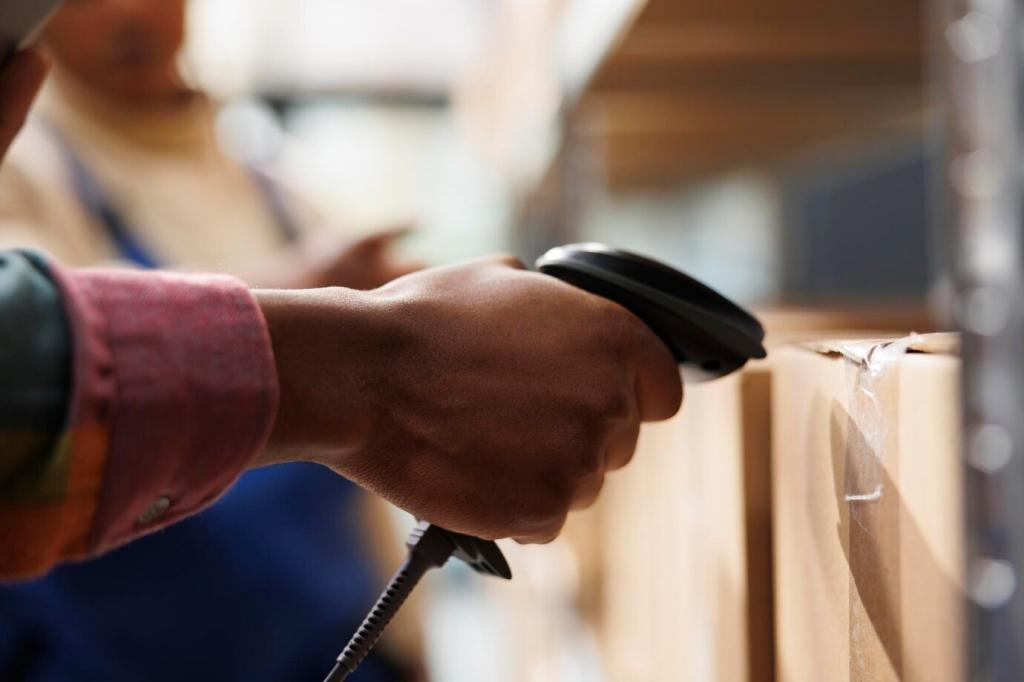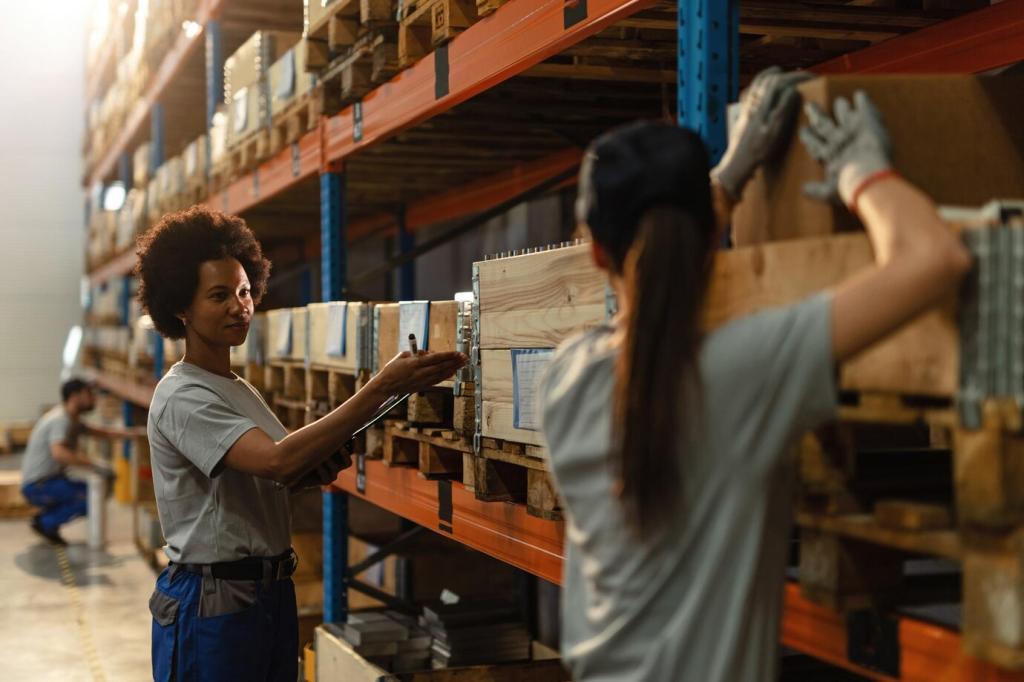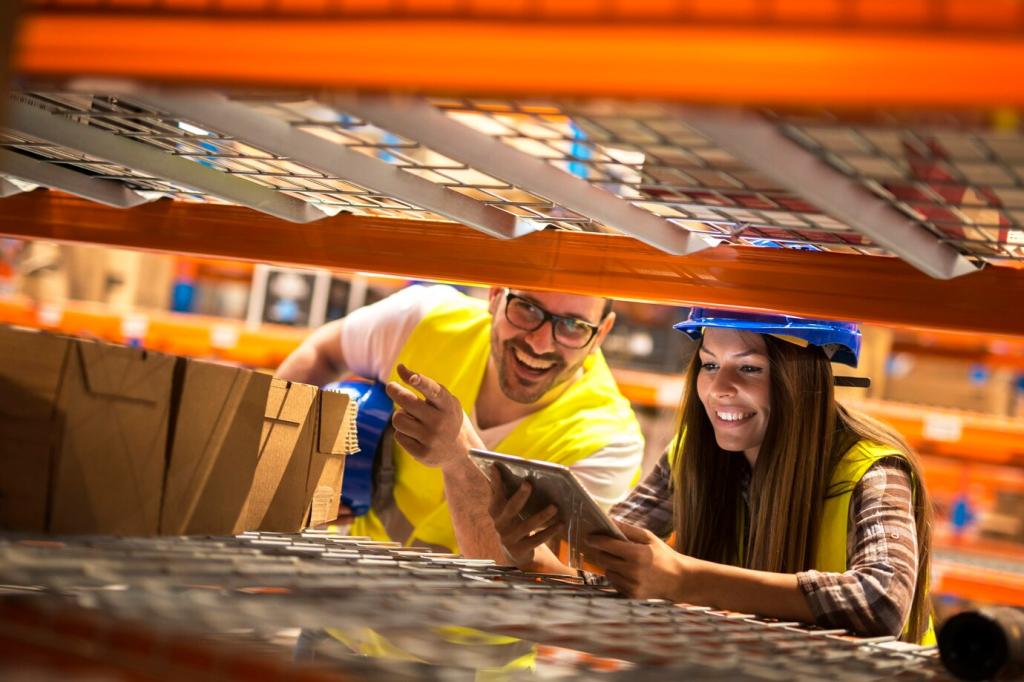
Case Studies: Successful Warehouse Automation Implementations
Chosen theme: Case Studies: Successful Warehouse Automation Implementations. Explore real-world transformations powered by AMRs, AS/RS, WMS/WES, and analytics. Expect hard metrics, candid lessons, and human stories. Share your experiences and subscribe for future deep dives that build on these practical wins.
From Chaos to Flow: A Regional 3PL’s Robotic Picking Turnaround
Before automation, the 3PL faced 18% order backlog during peak weeks, 93% pick accuracy, and overtime that exhausted crews. A time-and-motion study revealed 42% travel waste. Modeling suggested AMRs could cut non-value travel by half, raising throughput 25–35% with payback in 18–20 months. Would those assumptions hold?

Freshness at Speed: Grocery DC with Shuttle AS/RS in the Cold Chain
Handling perishable SKUs meant strict dwell times and careful slotting. Manual putaway created temperature excursions and misrotations. Audits showed 7% shrink linked to delays and door openings. The team needed faster, predictable moves that protected product integrity while reducing worker exposure to freezer conditions.
Apparel E‑Commerce Peak Readiness: Goods‑to‑Person and Put Walls

Pain Points Before Automation
During big drops, pickers walked marathon distances and lost time hunting sizes. Orders sat in totes waiting for consolidation. Returns piled up, complicating inventory accuracy. The brand needed burst capacity, rapid onboarding, and a way to orchestrate thousands of small orders without drowning operators.

Solution Architecture and Orchestration
Mini-load goods-to-person fed high-density put walls, while the WES grouped orders by common SKUs and size ranges. Smart slotting placed fast movers near ergonomic zones. A color-coded, exception-first UI trimmed cognitive load, helping seasonal hires produce at near-veteran rates within days.

Peak Week Outcomes
Units per labor hour climbed 48% during the biggest sale week, while order accuracy hit 99.2%. Wave completion visibility calmed customer service and marketing teams. The clever win: returns flowed back into GTP lanes for rapid reavailability. Tell us your peak date; we’ll tailor a readiness checklist.

Constraints That Shaped the Plan
The building limited vertical expansion and aisle widths. Full shutdowns were impossible. The answer was phased conveyor drops, mezzanine light-weighting, and heavier reliance on WES for wave logic. A digital twin flagged bottlenecks before anyone touched a bolt.
Implementation Without Disruption
Weekend micro-cutovers swapped gravity lanes for powered merges, while parallel pick paths kept orders flowing. Training happened in simulation, so day-one go-lives felt familiar. A veteran operator joked the new sorter knew the building’s quirks better than the old crew—because it was trained on them.
Benefits and What’s Next
Travel distance fell 20%, order cycle times improved 26%, and labor variability tightened. The team plans dynamic slotting tied to seasonality and vendor fill rates. Thinking about retrofit versus greenfield? Drop a note describing your constraint—height, utilities, or labor—and we’ll map comparable case metrics.

The Waste You Can See (and the Waste You Can’t)
Oversized boxes meant higher freight, more void fill, and customer frustration. Unseen inefficiencies included stop‑start conveyor patterns and poorly scheduled charging. A baseline audit quantified kilowatt-hours, corrugate use, and scope 2 emissions, building momentum for smart, targeted upgrades.

Technology and Process Changes
Cartonization software reduced dimensional waste, while auto-bagging handled small items efficiently. VFDs smoothed conveyor loads, and regenerative braking recaptured energy on declines. Maintenance schedules shifted from time-based to sensor-triggered, preventing energy-hungry failures and extending component life.

Impact, Story, and Next Steps
Freight cost per order dropped, corrugate use fell 18%, and energy intensity declined 12%. A customer emailed a photo of a perfectly sized parcel, praising the unboxing experience. Curious what sustainable lever fits your operation first? Comment with your top SKU profile and we’ll suggest a starting point.
